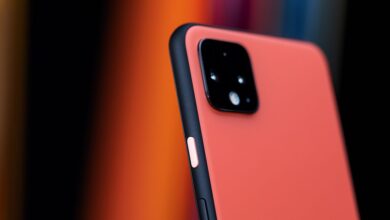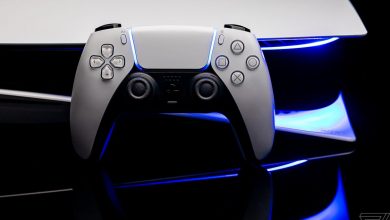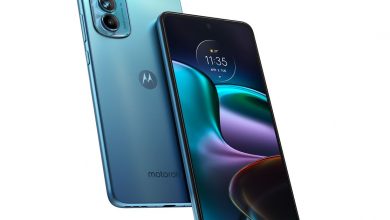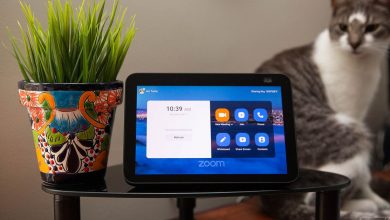TCL Stylus 5G review: not quite write

[ad_1]
TCL’s entry-level Stylus 5G makes sense for someone on a strict budget who absolutely must have 5G and a built-in stylus. That’s quite a specific demographic, and I’m not sure many people meet all of that criteria.
The TCL Stylus 5G is available for $258 from T-Mobile or $269 from Metro by T-Mobile — they’re the exact same model — and for now, those are the only ways to purchase it in the US. The Stylus 5G is also the third notable budget stylus phone to arrive on store shelves in the US this year, alongside the 2022 versions of Motorola’s Moto G Stylus and Moto G Stylus 5G. Got all those product names straight? Good, there’s a quiz later.
TCL’s stylus phone is the least expensive of the three, and its specs reflect that. It doesn’t offer quite as much RAM as the Motorola options or the $282 non-stylus OnePlus Nord N20, its 4,000mAh battery is on the small side for the class, and its 6.81-inch LCD offers neither a faster refresh rate nor the richness of an OLED — options its similarly priced competitors offer.
This all leaves the TCL Stylus in awkward territory. It’s inexpensive, to be sure, but also thoroughly unremarkable. Even under $300, a phone can offer something that stands out, and the TCL’s combination of a low price, 5G, and a stylus doesn’t add up to a valuable proposition.
The phone’s performance is acceptable, though there’s a noticeable stutter and hesitation here and there as I jump between apps, type emails, and scroll timelines. The Stylus’ MediaTek Dimensity 700 chipset and 4GB of RAM are adequate to get through daily tasks, but I wouldn’t expect a lot more from them. Battery stamina isn’t best-in-class, but it will last through a day of moderate use.
The Stylus’ 6.8-inch screen is an area where it seems like TCL could have done better, given its primary business making TVs. It’s a 1080p LCD, so resolution is adequate, and the screen gets bright enough to use in direct sunlight. But rather than offer a faster refresh rate, TCL continues to lean on its NXTVISION technology as its standout feature, and it’s just not impressive.
In theory, this feature enhances images on screen to boost color and contrast. In reality, it’s hard to spot the difference with the feature turned on or off, and the colors generally look oversaturated even in “natural” mode (it’s set to vivid by default). There’s nothing fundamentally wrong with this screen, and bearing in mind the sub-$300 price, it’s okay for the price. It’s just that TCL could do a little more in this department, and it probably should, given its pedigree.
:no_upscale()/cdn.vox-cdn.com/uploads/chorus_asset/file/23623663/ajohnson_220609_5282_0002.jpg)
The phone’s headline feature works as it should: pop the stylus out of its silo, and you’ll see a customizable screen of shortcuts to stylus-friendly apps. In addition to a stock notes app, TCL has partnered with Nebo to offer a version of its existing notes app that is built around handwriting recognition. It doesn’t quite have all the robust features of the paid version of the app, but it does include some features not available on the typical notes app. For example, you can underline a handwritten phrase to convert it to bold text or add spacing by drawing lines through handwriting. It’s also more conducive to mixing handwriting and keyboard-typed text.
Individual notes are formatted either as ruled pages for text or grid-lined freeform pages better suited to doodling. As a result, the divisions between notes are more rigid than Motorola’s tabbed interface. You can add a freeform section to a text-based page, but you can’t easily add text or convert handwriting on a freeform page. There’s not much you can do to style your note page with different background colors, either — for that, you’ll need to go to TCL’s standard notes app.
There’s also a handwriting-friendly calculator app called MyScript 2, also made by the same company as Nebo. It takes written equations, turns them into text, solves them, and saves the results in the app’s history for later reference. It’s a nice addition that’s not included on Motorola’s stylus phones — but it’s also a $3 app that anyone can download, so it shouldn’t be a deal maker or breaker. Outside of those two apps, there are a few other useful items on the stylus shortcut menu, like a screen magnifier and GIF maker — nothing that’s revolutionary or even necessarily requires a stylus but mimic some of the pen options Samsung provides on its premium S22 Ultra stylus phone.
:no_upscale()/cdn.vox-cdn.com/uploads/chorus_asset/file/23623664/ajohnson_220609_5282_0003.jpg)
The Stylus 5G ships with Android 12, as it should, because Android 13 is nigh. TCL’s marketing director, Stefan Streit, says that the phone will get Android 13, but that will be the only OS upgrade that it sees. It’s only scheduled to receive two years of security updates, which isn’t much. Both Motorola and OnePlus offer three years of security updates for similarly priced phones, so TCL’s two-year policy is on the low end, even among budget devices.
The Stylus 5G includes three rear cameras — there are four lenses, but one of them houses a 2-megapixel depth sensor you can disregard. There’s a 50-megapixel main camera, a 5-megapixel ultrawide, and a 2-megapixel macro. Around front, there’s a 13-megapixel selfie camera.
It’s a very similar configuration to the TCL 30 V 5G, and performance is similar. The camera does much more face-smoothing than I prefer, and it’s prone to some strange lens flare — subtle but noticeable. Otherwise, photos in good and even moderately low light look pleasant, with vibrant (if a tad cool) colors. In dim light, the combination of face-smoothing and low shutter speeds mean you’ll get a lot of blurry people photos. Video recording tops out at 1080p, and clips look rather shaky even with the system’s electronic image stabilization enabled.
:no_upscale()/cdn.vox-cdn.com/uploads/chorus_asset/file/23623662/ajohnson_220609_5282_0001.jpg)
The TCL Stylus 5G is largely unremarkable, and even considering its very reasonable price, it’s hard to recommend. The stylus works well, and its pre-downloaded handwriting apps do a little more than the standard options from Motorola. But as a total package, it falls well short of Motorola’s 5G and non-5G stylus phones with a lackluster screen, middling performance, and one less year of software support.
If a stylus is a must-have and there’s some flexibility in your budget, then the 2022 Moto G Stylus 5G is well worth the extra money. The version that T-Mobile sells has 6GB of RAM and 128GB of storage, which is less than the 8GB / 256GB unlocked version we reviewed, but it costs $300 rather than $500. For $40 more, it is a good bit pricier than the TCL Stylus 5G, but it’s a much better device with an extra year of security updates promised.
If a stylus isn’t a must-have, the OnePlus N20 is an excellent option for those on T-Mobile. It offers one of the nicest screens in the class and fast wired charging — and at $282, it’s within striking distance of the $260(ish) Stylus 5G.
Realistically, TCL is probably trying to scoop up some of the budget stylus phone market that LG left behind when it took its Stylo phones and exited the smartphone business. Fittingly, the last Stylo phone (well, the first, too) I reviewed included good stylus features but was ultimately too slow to recommend. TCL seems to wear LG’s shoes a little too comfortably here.
Photography by Allison Johnson / The Verge
[ad_2]
Source link






